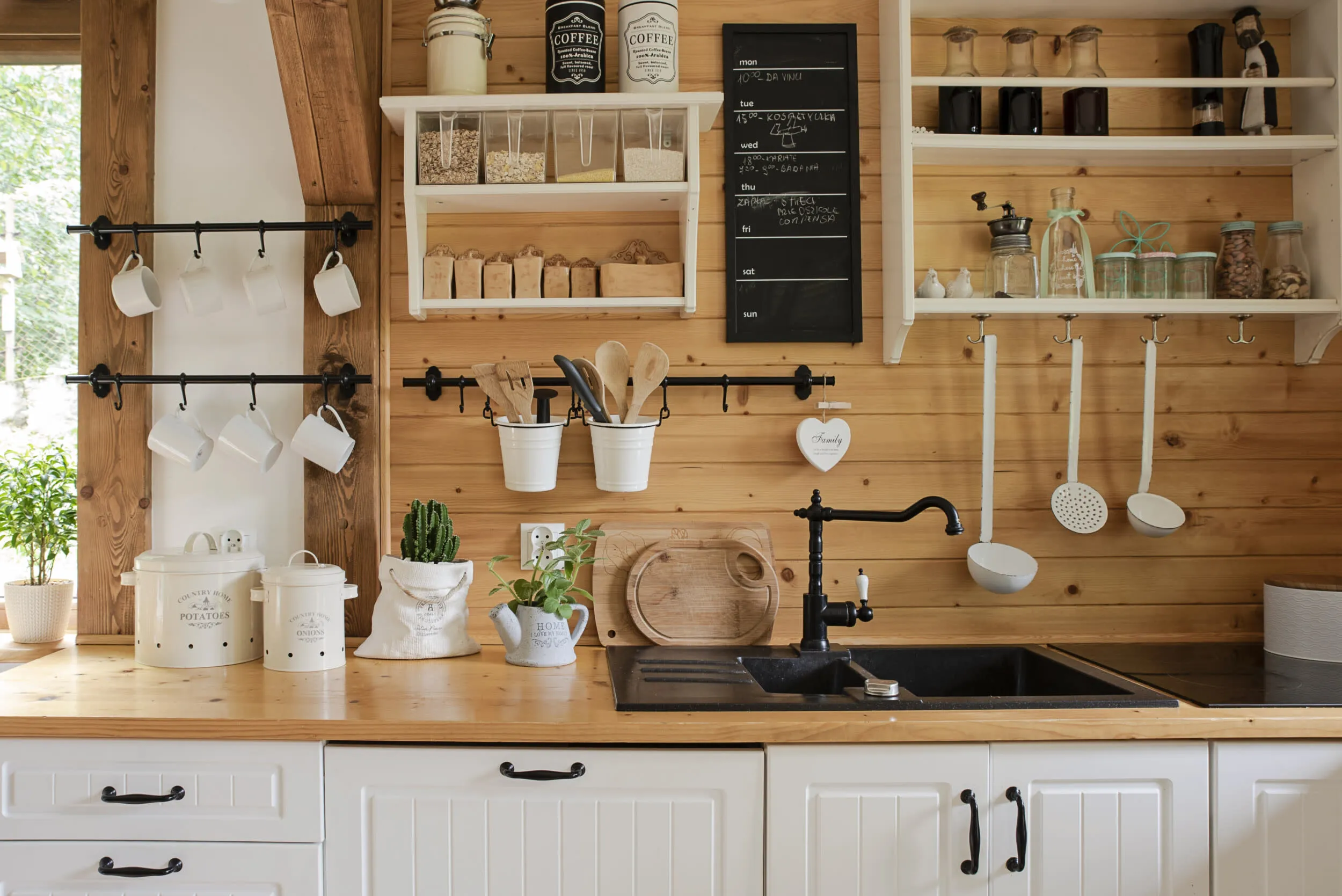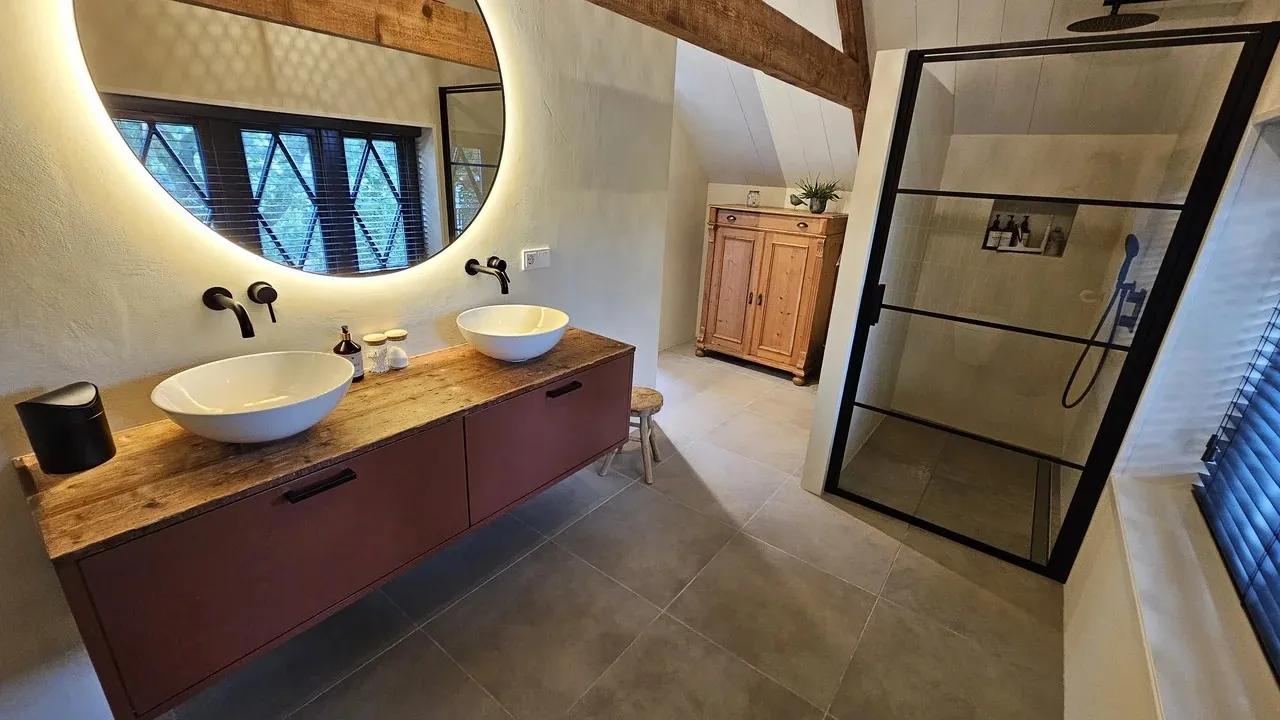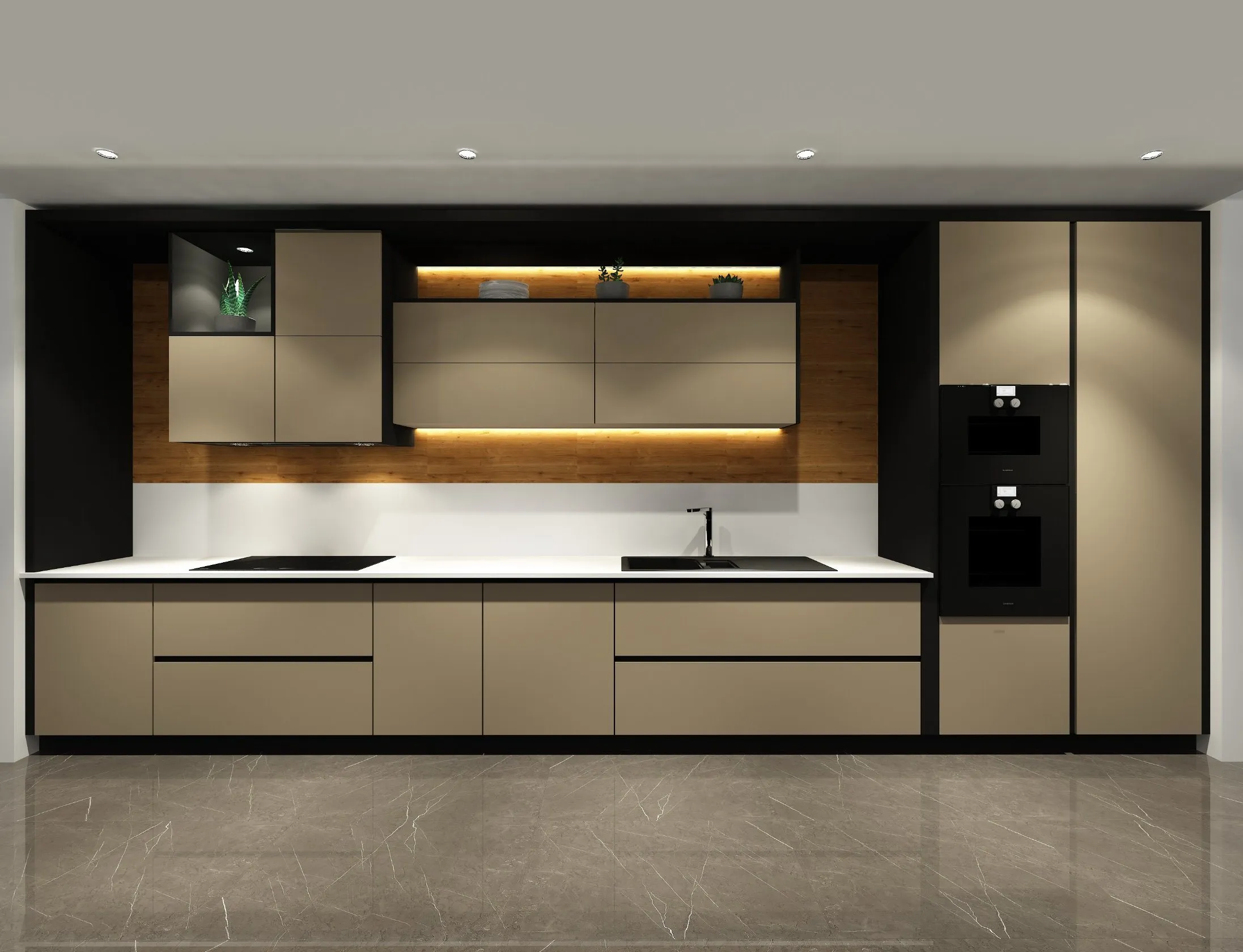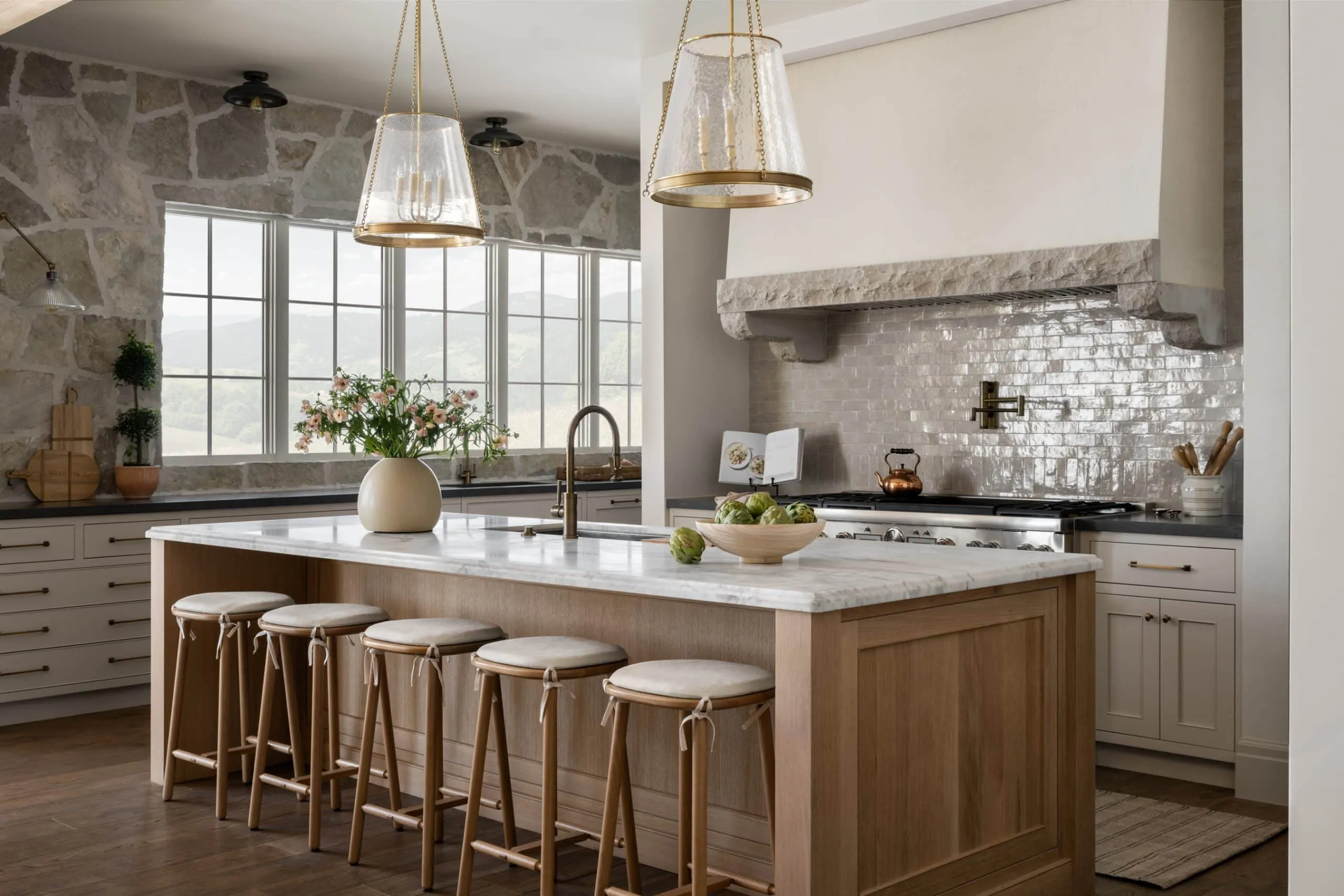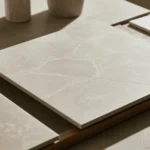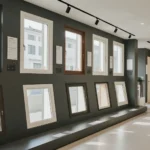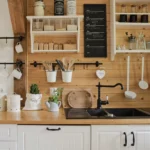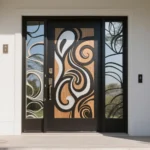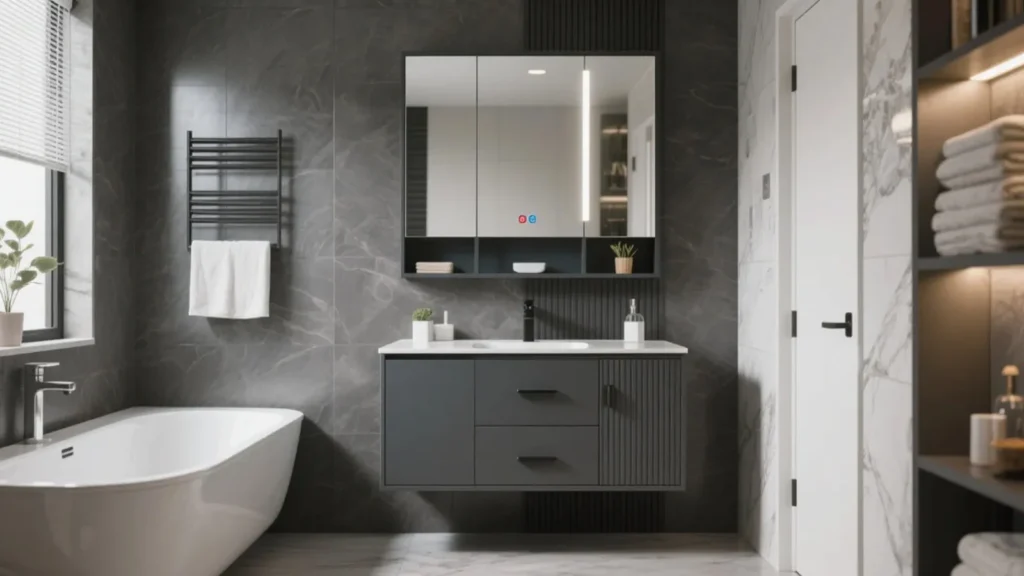
Too many choices for a small bath? You need clarity, not trends. This guide helps you pick what fits your space, habits, and budget.
We work as a one-stop building-materials partner from the Foshan manufacturing hub, serving overseas projects end-to-end. We handle kitchens, wardrobes, bathrooms, doors, windows, tiles, lights, flooring, and wall panels. We support homeowners, remodelers, designers, developers, and contractors. We also provide whole-home style matching, interior and façade 3D design, export logistics, and after-sales support—kept simple and coordinated.
A mirror gives scale and light; a medicine cabinet adds eye-level storage. Pick based on space, wall conditions, and daily use. Small baths or cluttered counters often benefit from recessed cabinets. Larger or design-led spaces can prefer a single mirror with separate storage.
Ready? Let’s go deeper so you can choose with confidence.
What’s the difference between a mirror and a medicine cabinet?
A mirror is a reflective surface for light and grooming. A medicine cabinet combines a mirror with shallow shelves at eye level. The choice comes down to storage vs. visual openness. Cabinets win when counters are crowded; mirrors win when you want a clean look and the widest field of view.
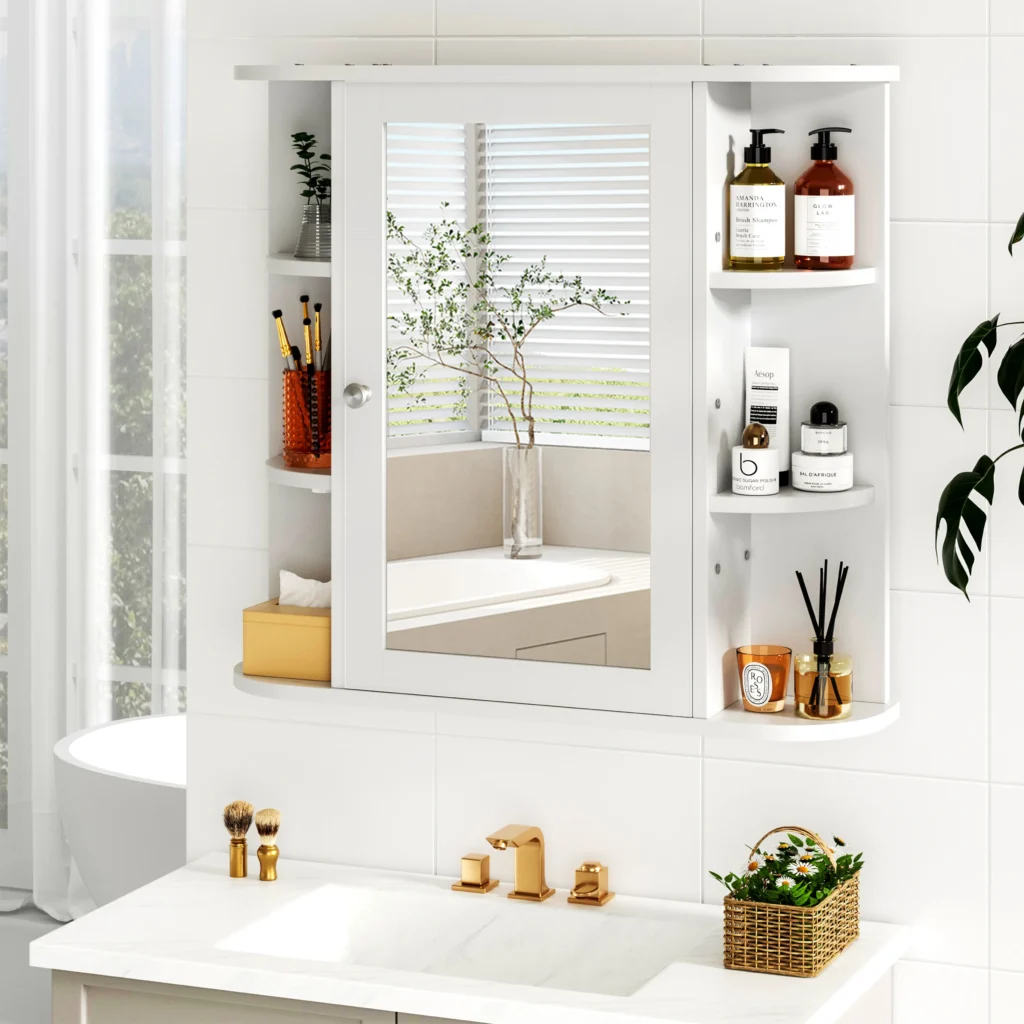
Use cases and trade-offs
- Mirrors: best for visual width, easy cleaning, flexible sizes, quick install.
- Medicine cabinets: best for everyday items at eye level, less counter clutter, door-back mirrors for side views.
Quick comparison
| Feature | Plain Mirror | Medicine Cabinet |
| Eye-level storage | — | ✓ |
| Visual widening | ✓ | — (recessed is better than surface) |
| Install complexity | Low | Recessed = medium; surface = low |
| Best for tiny baths | Good | Often best if recessed |
| Side-angle viewing | Needs side sconces or extra mirror | Door-back or tri-view |
If storage is the pain point, a cabinet often solves it. If the room feels tight or dark, a wide mirror may be the better first move.
Which suits a small bathroom better?
Small rooms need space efficiency and optical tricks. A recessed cabinet tucks storage into the wall so the room still feels open. In narrow rooms, a wide mirror can stretch sightlines and bounce light. Your wall depth and stud layout decide how far you can recess.
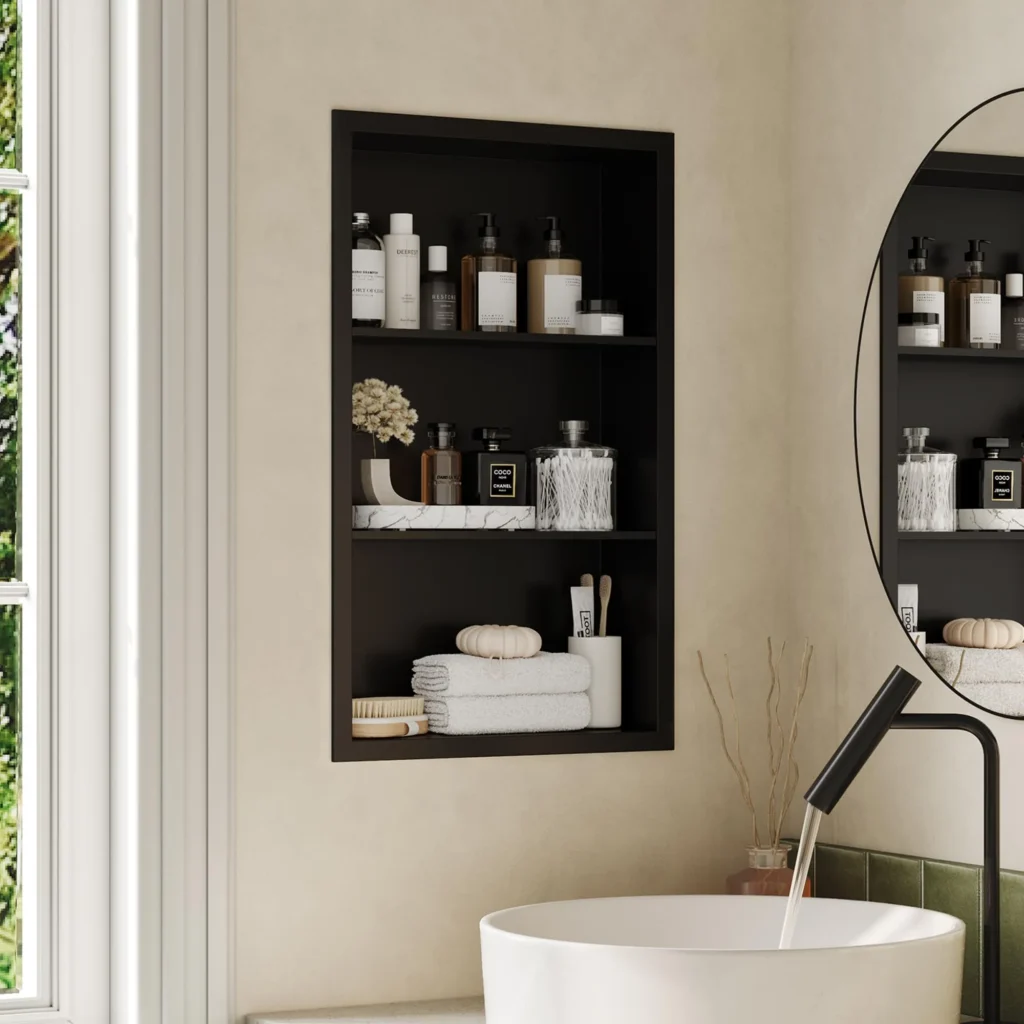
How to decide in tight spaces
Start with your habits. If you reach for skincare, contacts, or shaving tools many times a day, eye-level shelves reduce bending and clutter. If you mostly need a big, bright reflection, a mirror with good sconces may feel larger.
Layout tips for tiny rooms
- Recess whenever the wall allows. A surface-mount cabinet can project too far.
- If the vanity is shallow, choose a shallow cabinet or a mirror to avoid bumping.
- For guest baths, storage needs are lower; a mirror can be simpler.
Optical tricks that help regardless
- Keep lines simple. One large rectangle often beats several small shapes.
- Align top edges of mirror/cabinet with door or window heads for calm sightlines.
- Use side sconces at face height to avoid shadows.
Do I need recessed or surface mount?
Recessed installs sit inside the wall cavity, so the door is closer to flush. Surface-mount models hang on the wall, projecting more. Choose based on wall construction, plumbing routes, and the look you want. Check where each wall stud runs before you decide.
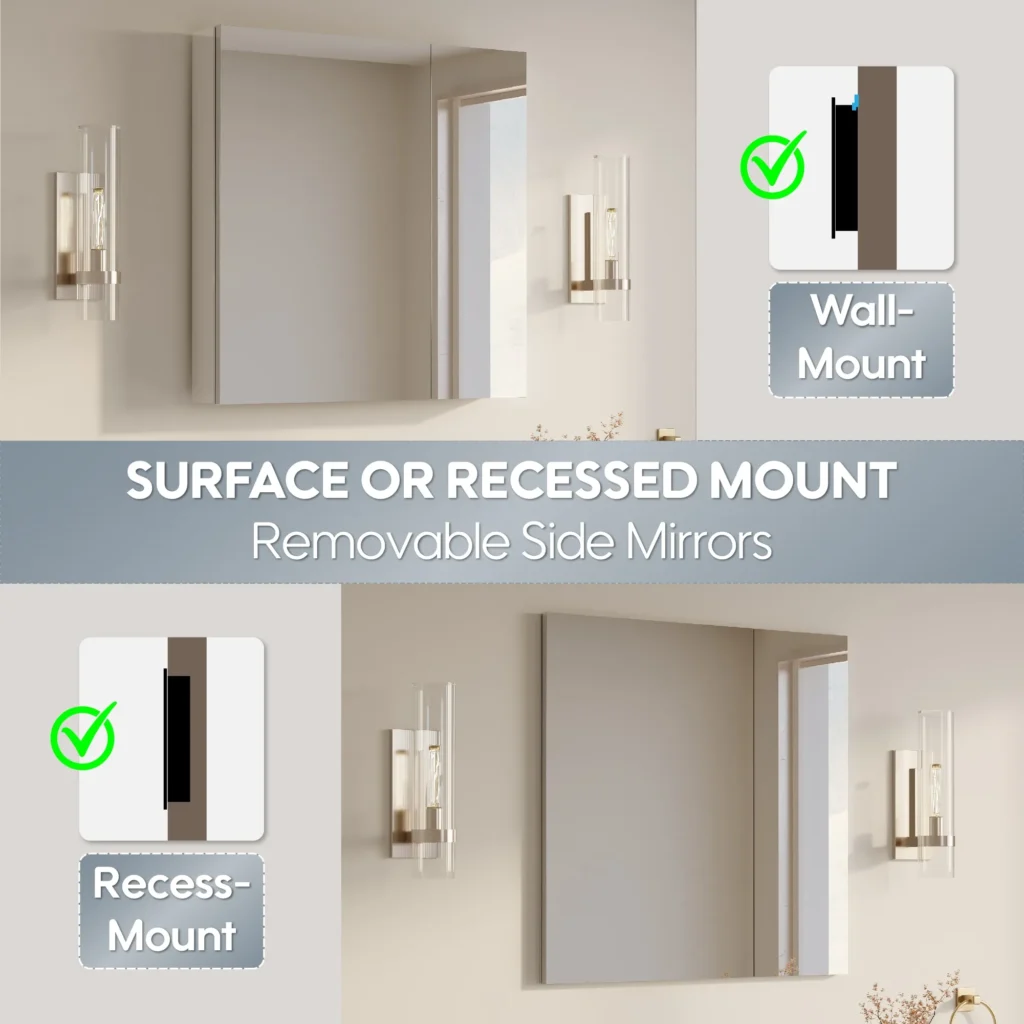
What to check before cutting
Wall type
- Standard stud walls with drywall are usually fine for recessing.
- Masonry walls are harder to recess without niche framing.
Inside the wall
- Scan for supply lines, vents, and cables. Move the opening if you find conflicts.
- Avoid cutting load-bearing structural members; if you must, add proper headers and framing (hire a pro).
Depth and door swing
- Typical recessed depths are shallow; check the spec against your faucet and sconce projections.
- Surface-mount doors need more swing clearance. We cover that next.
Look and maintenance
- Recessed gives a built-in look and less projection to dust.
- Surface-mount is the easiest retrofit and avoids opening the wall.
When in doubt, tape a mock rectangle on the wall and stand in front of it. Open a book like a door to simulate swing. If it feels tight, pivot to recessed or a plain mirror.
How high should I hang the mirror?
Aim for eye comfort and clearance. Center the reflective area near average eye level. Keep clear space above the faucet and below the light fixture. If users vary in height, favor a taller piece so everyone sees hairline to shoulders.
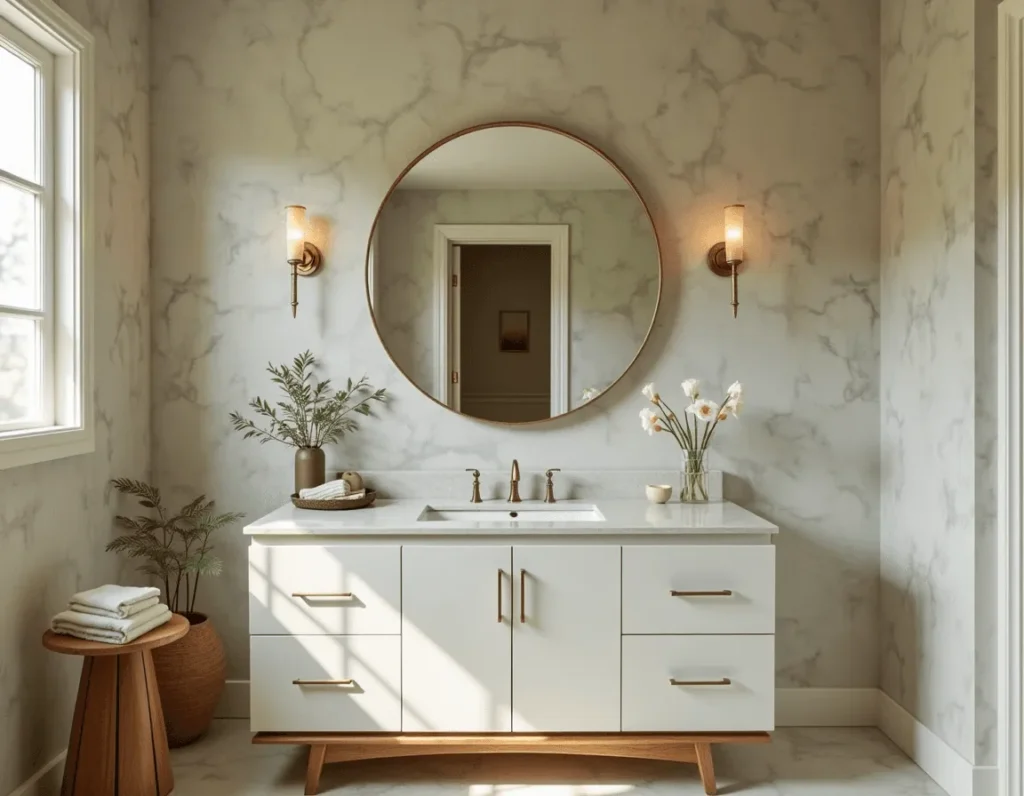
A practical, flexible approach
Find the visual center
- Stand where you groom. Mark eye level.
- Place the vertical center of the mirror or mirrored door near that mark.
Mind the edges
- Leave breathing room above the faucet backsplash.
- Avoid crowding the lighting. If sconces sit beside the mirror, keep the mirror slim enough that shades do not overlap the reflective surface.
For double vanities
- Two mirrors give each user a centered view.
- One large mirror creates a broader reflection and is easier to align lighting around.
There is no single number that fits all rooms. Use the user’s eye level and the fixtures you own as the fixed points, then size the mirror to fit between them.
Will door swing hit faucets or lights?
Door collisions are the most common cabinet regret. Check hinge side, open angle, and nearby fixtures. If a sconce or tall faucet stands proud, a surface-mount cabinet may bump it. Recessed models still need side clearance for full opening.
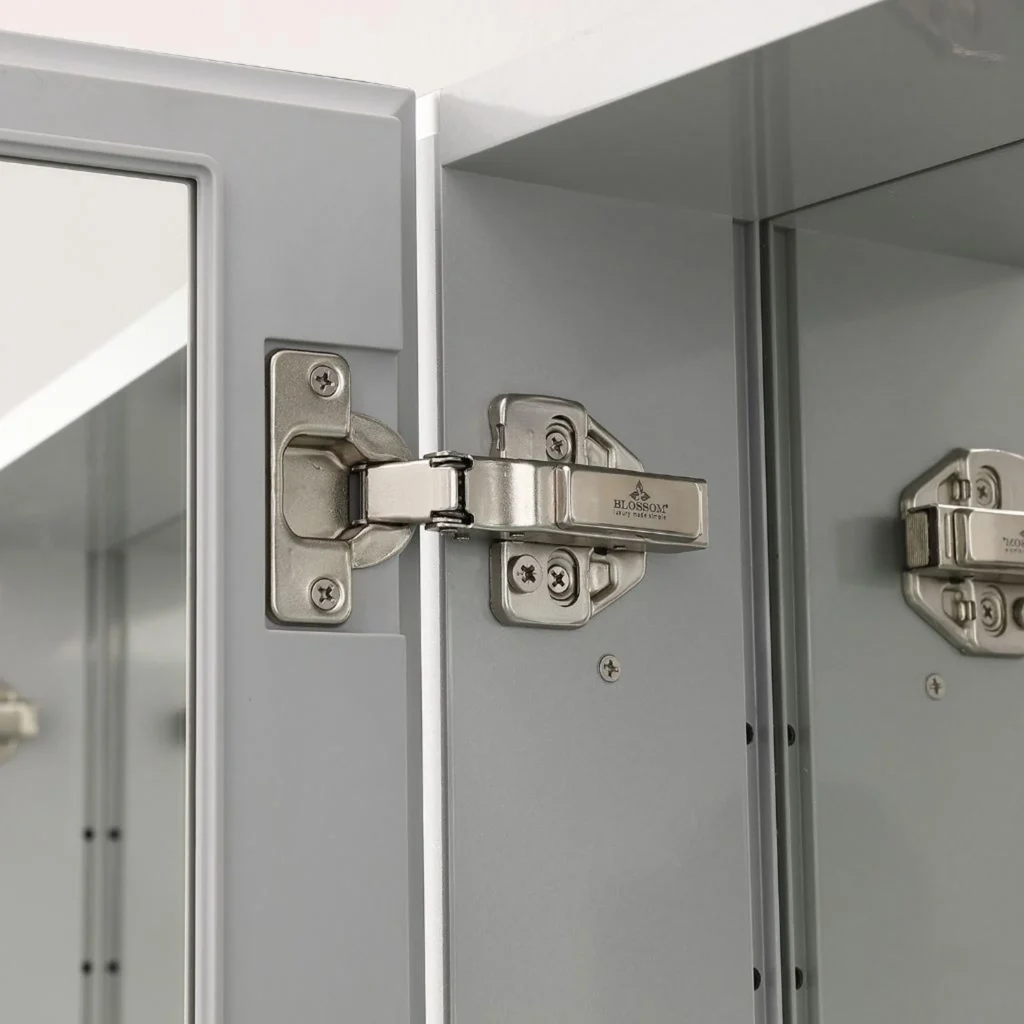
How to verify before buying
Tape and test
- Mark the cabinet outline on the wall.
- Use painter’s tape to show the door arc at 90°–130°.
- “Open” a cardboard stand-in to confirm no clashes.
Choose the right hinge and interior
- Switchable left/right swing solves many layouts.
- Interior mirrors let you see side angles with the door open, but need more space.
Coordinate with lighting
- Side sconces should sit clear of the arc.
- Over-mirror bars should sit high enough so the door does not catch them.
If you cannot avoid a conflict, select a plain mirror and add wall shelves or a tall linen cabinet nearby.
Are backlit mirrors bright enough for makeup?
Backlit mirrors can be bright and flattering when specified well. Look at lumens and color rendering index (CRI). For grooming, higher CRI helps you see true skin tones. Pair backlit mirrors with side lighting to reduce shadows.
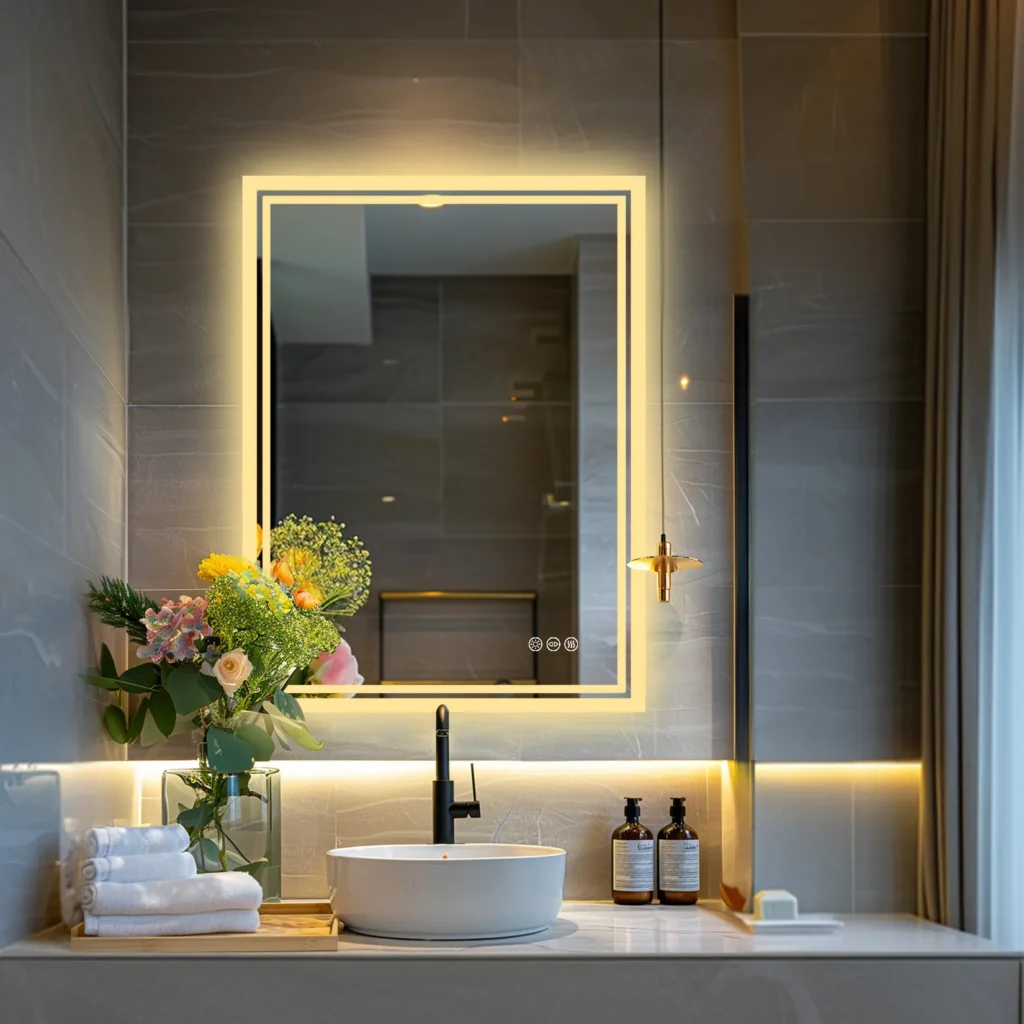
What to look for
Even, face-level light
- Light that wraps from both sides reduces nose and chin shadows.
- Side sconces at face height complement a backlit mirror.
Color and output
- A neutral white range helps daily tasks.
- A higher CRI (often 90+) gives more natural color for makeup.
Dimming and control
- Dimming helps mornings vs. late nights.
- Anti-fog heaters are useful in steamy rooms; check power needs and safety ratings.
Safety around water
- If the mirror has electrics, look for an ingress protection rating appropriate for bathroom zones.
- Use proper switching and a protected circuit as local code requires.
If you already have strong overhead light but poor side light, a backlit mirror alone might not fix shadows. Add sconces to complete the setup.
Which materials resist rust in humid bathrooms?
Humid rooms challenge metals and mirror edges. Aluminum and stainless steel frames resist corrosion better than mild steel. For mirrors, copper-free backing and sealed edges slow blackening. Good ventilation and careful cleaning help any choice last longer.
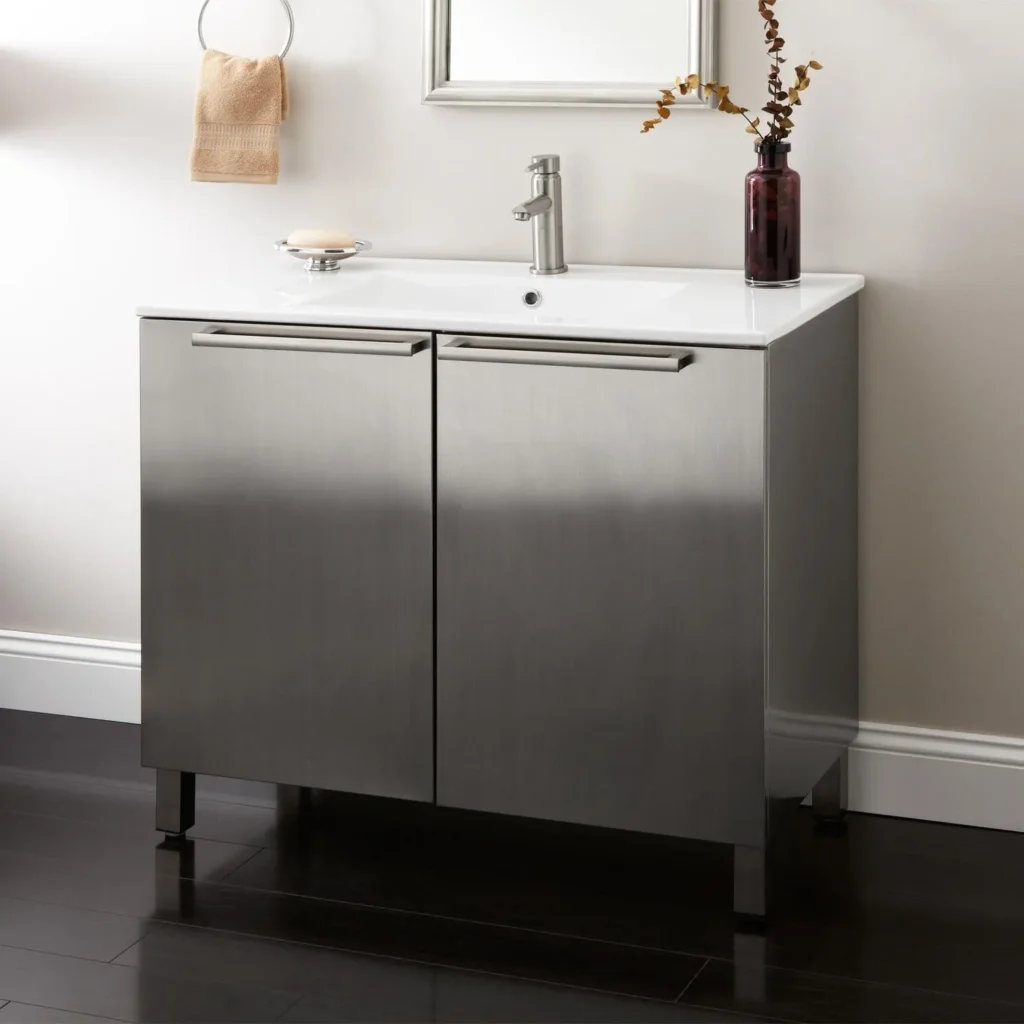
Material and finish choices that last
Frames and bodies
- Aluminum: light, corrosion-resistant, common in modern cabinets and frames.
- Stainless steel: tougher and more dent-resistant; look for quality grades.
- Powder-coated steel: budget-friendly; needs good coating to resist chips.
Mirror quality
- Copper-free, lead-free glass reduces edge blackening.
- Polished, sealed edges help in steamy environments.
- Avoid harsh cleaners that attack the backing.
For lighted mirrors
- Check enclosure and switchgear ratings for damp zones (see IP code above).
- Keep ventilation running during and after showers to reduce condensation.
Good habits matter. Wipe standing moisture, open the door to vent, and avoid spraying cleaners into gaps where liquids can reach the mirror’s back.
What’s the typical cost difference and ROI?
A plain mirror usually costs less to buy and install. A medicine cabinet costs more, especially recessed, but gives daily convenience and tidier counters. Think in years, not days. The right choice saves time every morning and keeps the vanity clear.
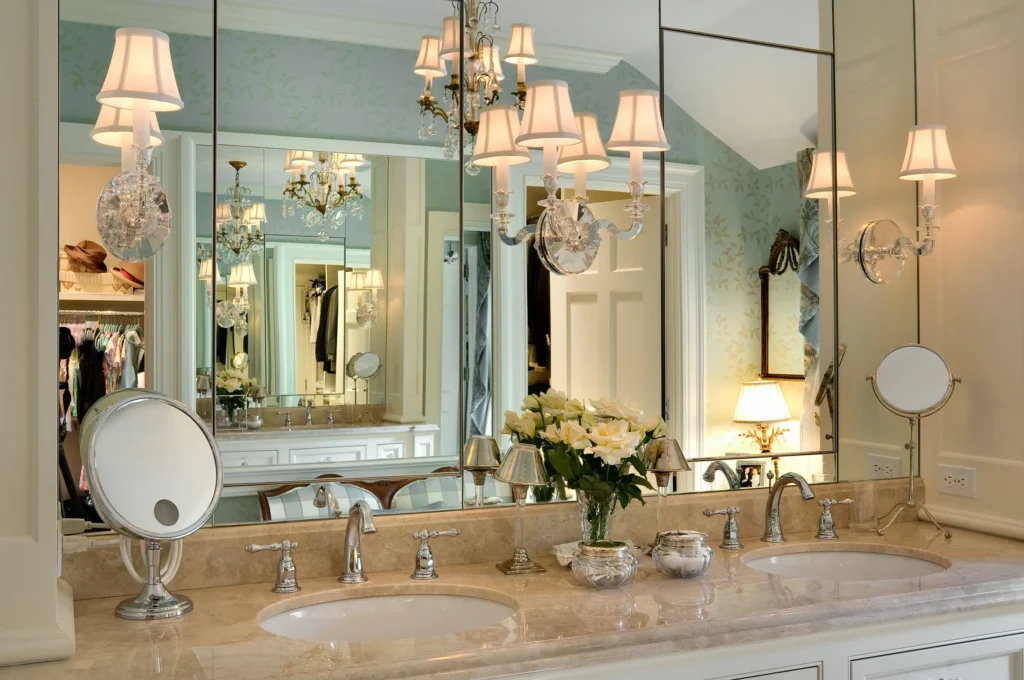
How to judge value for you
Upfront
- Mirrors: lower purchase cost, simple hanging.
- Cabinets: higher cost, possible wall opening, more hardware.
Lifetime
- If you constantly pick items off the counter, the cabinet pays you back in less mess.
- If you already have drawers and shelves nearby, a large mirror may be smarter.
Resale perception
- Built-in storage reads as thoughtful in small baths.
- A clean, well-lit mirror wall reads as spacious and modern.
Add your labor reality. If opening a wall triggers a bigger remodel, a surface-mount cabinet or a mirror might be the best ROI now.
Conclusion
Choose by problems, not trends. Match storage, wall conditions, and lighting to how you live.
Final CTA
If you have a floor plan, send it. We can suggest a layout, match the style across rooms, and give a quick budget idea. Want to get started? Send the floor plan to us.
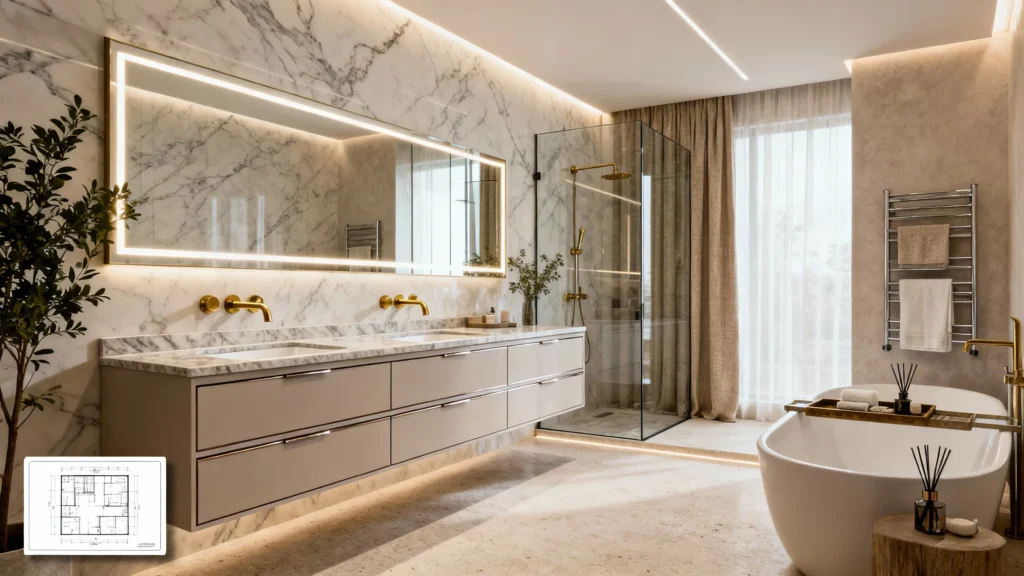
FAQ
Are medicine cabinets out of style?
No. Designers still use them for small baths and tidy counters. Recessed or custom versions look modern while adding function.
How deep is a standard medicine cabinet?
Many common models are around 4 inches deep, with variations by brand and type. Recessed units tend to be shallower than surface-mount.
Do LED bathroom mirrors need to be hardwired?
Many are hardwired for a clean look, but plug-in options exist and suit rentals or quick installs. Check the product’s power requirements before buying.
Should a bathroom mirror be the same width as the vanity?
Often the mirror is the same width or slightly narrower for balance. Measure your vanity first, then size the mirror to fit the available height and lighting.
What are common mistakes when decorating with mirrors?
Placing mirrors to reflect clutter, choosing a mirror that’s too small, or forgetting how light works in the room. Aim for flattering reflections and the right scale.
Should I choose mirror or lighting first over the vanity?
Many designers pick lighting first because wiring sets limits. If the mirror is a strong focal point, choose it first and plan lighting around it.
Where should I store medicines if not in the bathroom cabinet?
A cool, dry place away from moisture—often a kitchen or hall cabinet—is safer than steamy bathrooms for many medications. Follow label guidance.

